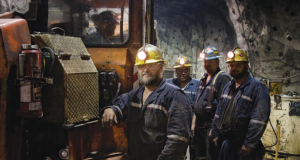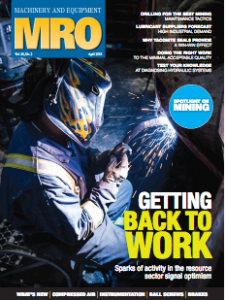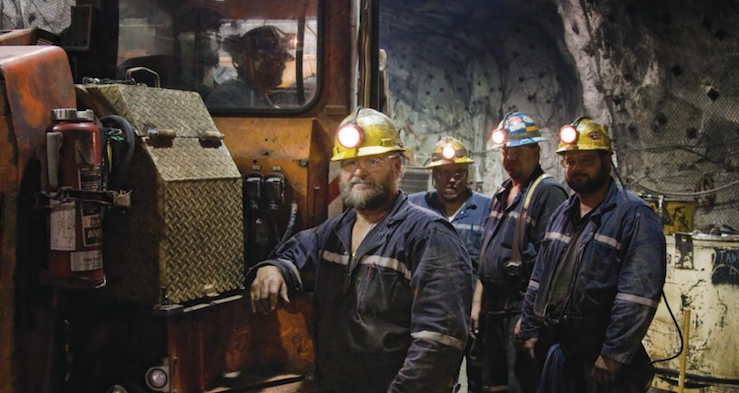
 In the April issue of Machinery and Equipment MRO, we zoom in on the resource sector with a special emphasis on mining.
In the April issue of Machinery and Equipment MRO, we zoom in on the resource sector with a special emphasis on mining.
Sectors such as mining, oil & gas and power lean heavily on asset integrity management services to ensure reliability, safety, regulatory compliance and the technical integrity of their assets. The importance of maintenance in the success of asset-intensive industries cannot be underplayed, as its role in sustaining asset value over time becomes more visible at the business level with the increase in acquisition and maintenance costs.
The mining sector has deep ties to other sectors. In Canada, this sector is associated with more than 3,700 companies supplying goods and services to the Canadian mining industry, according to the Mining Association of Canada. In 2016, Canada’s mining sector contributed $57.6 billion to the national GDP and accounted for 19 per cent of the value of Canadian goods exported.
Protectionist economic conditions and the high-risk nature of mining – along with the mission-critical role assets play in business success – threaten to complicate supply chains and long-term business relations. At stake are millions of dollars of annual maintenance stemming from mining equipment maintenance, repair solutions for mobile equipment – such as off-road trucks, shovels and drillers – and major processing plant equipment – such as crushers, ball and SAG mills, slurry pumps, flotation cells, conveyor belts, screens and much, much more.
 Analysts say that maintenance services demand is not adversely affected by economic slowdowns in the mining industry and falling commodity prices. To the contrary, mining companies are on the hook to keep up their maintenance activities to improve the life and performance of equipment by reducing downtime.
Analysts say that maintenance services demand is not adversely affected by economic slowdowns in the mining industry and falling commodity prices. To the contrary, mining companies are on the hook to keep up their maintenance activities to improve the life and performance of equipment by reducing downtime.
The global mining equipment market was expected to grow at a compound annual growth rate of 8.1 per cent and reach $84.2 billion by the end of 2017, up from $66.7 billion in 2014, according to a report by global market intelligence firm Beroe. Similarly, the total global heavy machinery equipment service market was valued at $31 billion in 2016, with a forecasted growth of 3 to 4 per cent CAGR to $33 billion in 2018.
Notably, Caterpillar Inc. reported strong first quarter earnings. Sales and revenues stood at $12.9 billion, compared with $9.8 billion in the first quarter of 2017. Machinery, Energy & Transportation (ME&T) operating cash flow was $948 million and the company repurchased $500 million of Caterpillar common stock. The Deerfield, Ill.-based heavy equipment manufacturer told analysts that it did not expect to top its first-quarter profit for the rest of the year, but with better-than-expected sales volume, the company is poised for improvement.
The numbers represent an astounding measure of opportunity that major mining equipment manufacturers can dutifully seize upon. Look to mining and heavy equipment giants such as Caterpillar Inc., Hitachi Construction Machinery Co., Komatsu Ltd., Joy Global Inc. and Atlas Copco for impressive trendsetting technology – from automatic power crushers and multi-functional excavators, to hybrid electric motors and rail-veyors for bulk material haulage solutions. These advancements expand not only the field of maintenance but also the requisite skills for meeting future production.
To be successful requires forward thinking. Miners of the future are proving they are keen to leverage tools that improve decision-making, increase efficiency and achieve better returns.
Viewed from this perspective, industrial manufacturing can do a lot for its maintenance maturity models by learning from the mining sector’s experience during times of slow growth, when productivity gains are vital.
Rehana Begg is the editor of Machinery and Equipment MRO. Read the spotlight on mining section in the April 2018 issue of Machinery and Equipment MRO.

